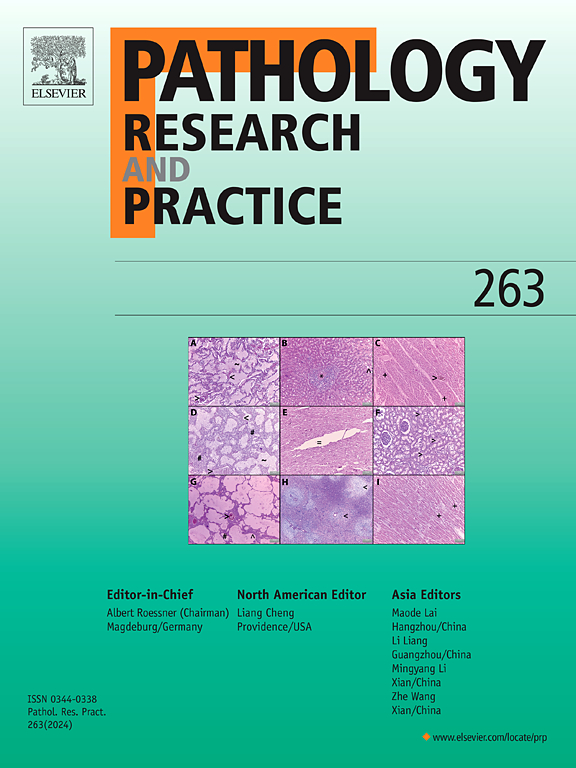A complete sojourn on exosomes: Potential diagnostic and therapeutic agents
IF 2.9
4区 医学
Q2 PATHOLOGY
引用次数: 0
Abstract
Exosomes are vesicles produced by the human body for carrying certain information from one cell to another. The carriers are nanosized vesicles carrying a wide variety of cargo like RNA, DNA, and proteins. Exosomes are also being used in the early diagnosis of various diseases and disorders. Current research focuses on exosomes tailoring for achieving therapeutic potential in various diseases and disorders. Besides this, their biocompatibility, stability, adjustable efficacy, and targeting properties make them attractive vehicles for formulation developers. Various preclinical studies suggested that the exosome culture cells are also modified with certain genes to achieve the desirable properties of resultant exosomes. The human body also produces some other vesicles like Ectosomes and Exomeres produced along with exosomes. Additionally, vesicles like Migrasomes are produced by migrating cells and apoptotic bodies, and Oncosomes are produced by cancer cells which can also be useful for the diagnosis of various diseases and disorders. For the separation of desired exosomes from other vesicles some latest techniques that can be useful viz differential centrifugation, density gradient centrifugation, and immunoaffinity purification have been discussed. Briefly, this review summarized various techniques of isolation of purified exosomes along with an overview of the application of exosomes in various neurodegenerative disorders and cancer along with various latest aspects of exosomes in disease progression and management which might be beneficial for the researchers.
外泌体的完整旅程:潜在的诊断和治疗药物
外泌体是人体产生的囊泡,用于将某些信息从一个细胞携带到另一个细胞。这种载体是纳米级的囊泡,携带多种货物,如 RNA、DNA 和蛋白质。外泌体还被用于各种疾病的早期诊断。目前的研究重点是外泌体的定制,以实现对各种疾病的治疗潜力。除此之外,外泌体的生物相容性、稳定性、可调药效和靶向性使其成为制剂开发人员的理想载体。各种临床前研究表明,外泌体培养细胞也可通过改变某些基因来实现外泌体的理想特性。人体还产生一些其他囊泡,如与外泌体同时产生的外泌体和外泌体。此外,迁移细胞和凋亡体也会产生迁移体(Migrasomes)等囊泡,癌细胞也会产生肿瘤体(Oncosomes),这些囊泡也可用于诊断各种疾病。为了从其他囊泡中分离出所需的外泌体,我们讨论了一些有用的最新技术,即差速离心、密度梯度离心和免疫亲和纯化。简而言之,这篇综述总结了分离纯化外泌体的各种技术,同时概述了外泌体在各种神经退行性疾病和癌症中的应用,以及外泌体在疾病进展和管理中的各种最新方面,这可能对研究人员有益。
本文章由计算机程序翻译,如有差异,请以英文原文为准。
求助全文
约1分钟内获得全文
求助全文
来源期刊
CiteScore
5.00
自引率
3.60%
发文量
405
审稿时长
24 days
期刊介绍:
Pathology, Research and Practice provides accessible coverage of the most recent developments across the entire field of pathology: Reviews focus on recent progress in pathology, while Comments look at interesting current problems and at hypotheses for future developments in pathology. Original Papers present novel findings on all aspects of general, anatomic and molecular pathology. Rapid Communications inform readers on preliminary findings that may be relevant for further studies and need to be communicated quickly. Teaching Cases look at new aspects or special diagnostic problems of diseases and at case reports relevant for the pathologist''s practice.

 求助内容:
求助内容: 应助结果提醒方式:
应助结果提醒方式:


